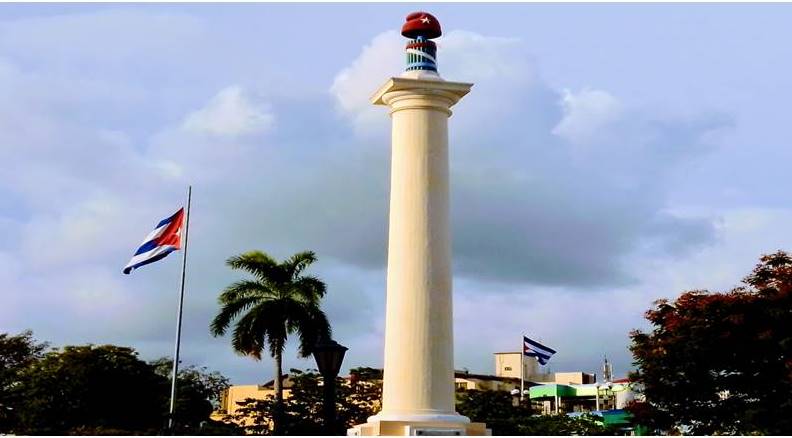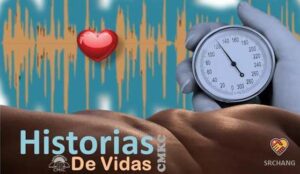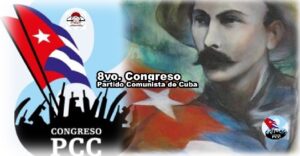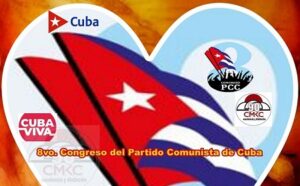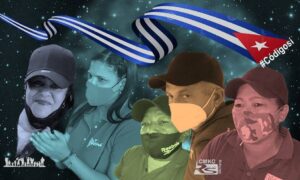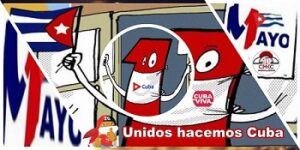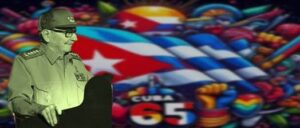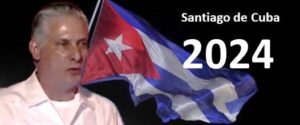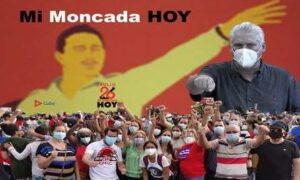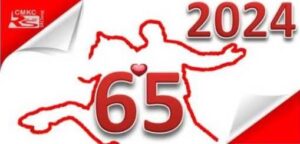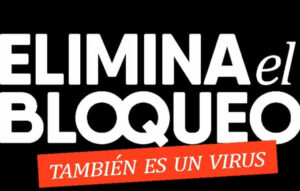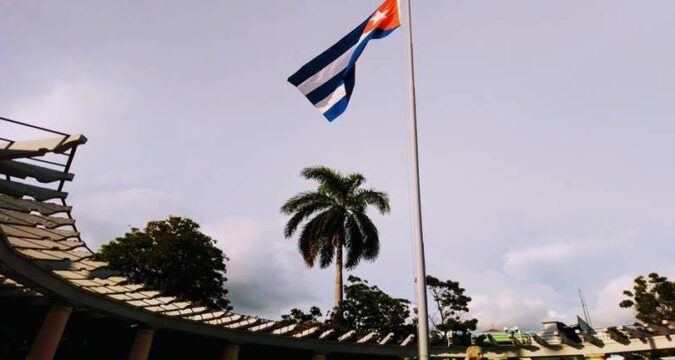
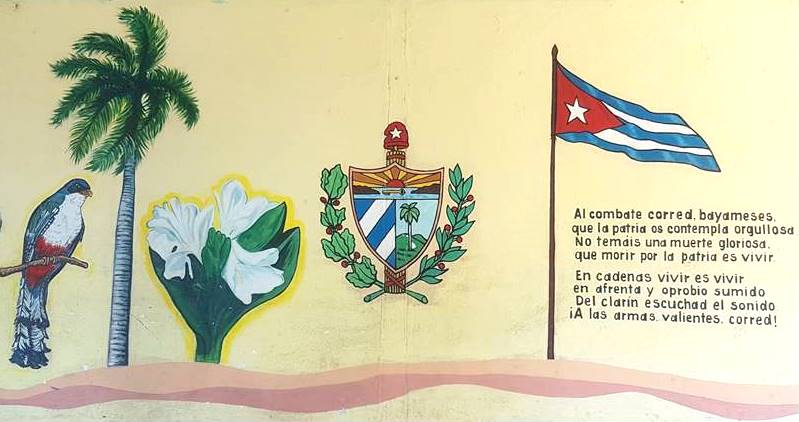
By: Giselle Mendez
Assimilation of the National Symbols Law. In order to meet with the responsibilities assigned to the different levels of education regarding the provisions of the National Symbols Law, educational institutions in Santiago de Cuba implement curricular and extracurricular actions aimed at promoting knowledge of the National Symbols and inspiring veneration for what they represent.
The actions implemented for this purpose are based on the provisions of Law No.128/2019, as well as Resolution 71/2020: Regulations for the use of the National Symbols in the institutions of the National Education System.
According to these regulations, teachers, professors, day care center staff, coaches, educational instructors and all those people in charge of the care and education of children and young people, are compelled to teach them the characteristics, historical significance, use and honoring of the symbols, in correspondence with the teaching level where they perform and the learning capabilities of each student.
In all educational institutions in Santiago de Cuba, the national symbols are honored as part of the school dynamics.
The National Flag is hoisted daily during the teaching period, always in a vigorous manner, by students or other people authorized by the school administration. When the flag is lowered at the end of school activities or when weather conditions deteriorate, it is done slowly and solemnly, taking care that it does not touch the ground, water or any object under it, as a continuation of the Mambi tradition of not letting it fall, not even when the standard-bearer rider was wounded in the battlefield.
The National Anthem is sung after the flag of the lone star is raised, always with vigor since it is a song of combat, emerged in the heat of the struggle for the independence of Cuba and that calls to defend the Homeland; therefore, if any person is walking when he hears it, he stops, and if he is seated, he stands up and adopts the position of attention.
In all schools, the National Coat of Arms is visible in a prominent and honored place, and located on the wall facing the desks of the students, in the classrooms or similar facilities.
Honoring and bowing to national symbols are always taught from an early age.
In day care centers and schools with pre-school children, the staff develops activities directed to educate in them feelings of love and respect towards the symbols.
At this level, this objective is achieved through different methods and didactic means to relate the infants with the history of their homeland and the national symbols, which includes, among other actions: the narration of stories and the reading of literary works related to the struggle of heroes and martyrs, the learning of poems referring to the symbols and the presentation of illustration of places where they are located. In the Santiago de Cuba day care centers, as in those of the whole country, there is a place of honor to pay homage to the National Hero Jose Marti, located next to the flag of the lone star that the poet immortalized in his simple verses.
According to the provisions of the Law, including the family in the design of strategies for the methodological treatment of the contents related to national symbols is essential to ensure the early awakening of a behavior of respect and conscious veneration towards them.
The Law of the National Symbols of the Republic of Cuba deals with an unconditional love: that which is to be manifested in every Cuban in the presence of the flag of the lone star and the coat of arms of the royal palm, or when listening to or singing the Hymn of Bayamo, with which the identity of the nation, and its history, is strengthened.
National Symbols Law: in Santiago de Cuba (II)
By: Giselle Mendez
The National Symbols Law and shared responsibility. The State, the school, the family and the media: share responsibility in the knowledge and implementation of the Law on National Symbols.
The new Law favors a greater presence of national symbols in society as well as in virtual spaces, in the face of the symbolic war that is carried out against Cuba from the hegemonic centers of power with the intention of discrediting it, questioning its principles, fundamentally in the digital scenario.
The initiatives to lacerate the national culture in this context are mainly aimed at the new generations, hence the Law assigns a preeminent role to school institutions in the teaching of contents related to patriotic symbols.
In Santiago de Cuba, young people from the University of Oriente, who joined Educating for Love, have in their hands the task of approaching the meaning of national symbols in greater depth in the educational processes in previous levels of education, where they have been acting as teachers from this school year 2023, stressed Cynthia Ibatao, member of the Council of the Federation of University Students (FEU in Spanish) of the University of Oriente.
In this sense, the Law establishes as obligatory for the organizations responsible for the integral formation of the new generations, to incorporate in their syllabus the knowledge and respect of the symbols, reinforcing the responsibility of teaching and non-teaching staff so that the students know what has been established in terms of the honors and respect they must show.
This young university student of the Santiago de Cuba Alma Mater noted that in addition to the school, the family needs to assume a more active and committed position with the approach to the history represented by the national symbols.
The fourth-year journalism student from Santiago de Cuba also stressed the potential of the media to disseminate the contents of the Law, in order to achieve its gradual apprehension in the conscience and social practice of every Cuban.
In this sense, Article 72 is vital, which makes the media responsible for the creation and development of communication strategies to systematically disseminate the content of the law, in order to promote the respect and veneration of Cubans for the national symbols.
To the family, the duty to ensure this conduct among its members, promoting civic values based on the knowledge and veneration of the symbols (Article 73); to educators, the mission to teach the characteristics, historical significance, use and honors due to them as established in said Law (Article 75), ensuring that students honor them as one of their essential duties.
These are fundamental precepts that require a systematic treatment from the far-reaching community media in the province of Santiago de Cuba, as a way for the implementation the provisions of the Law in their communities and schools.
National Symbols Law: in Santiago de Cuba (II)

The remains of Carlos Manuel de Cespedes, Father of the Homeland, initiator of that independence deed, are in a beautiful mausoleum in the Santa Ifigenia cemetery in Santiago de Cuba; there remain raised, for the pride of the Cubans of this part of the Island, the National Flag and a replica of the flag that the patriot raised on October 10, 1868. The date appears engraved on one of the tiles that surrounds the monument crowned by the Phrygian cap in the Plaza de Marte, as a perennial reminder of the history of the Homeland to the passers-by of the city.
The National Symbols of Cuba
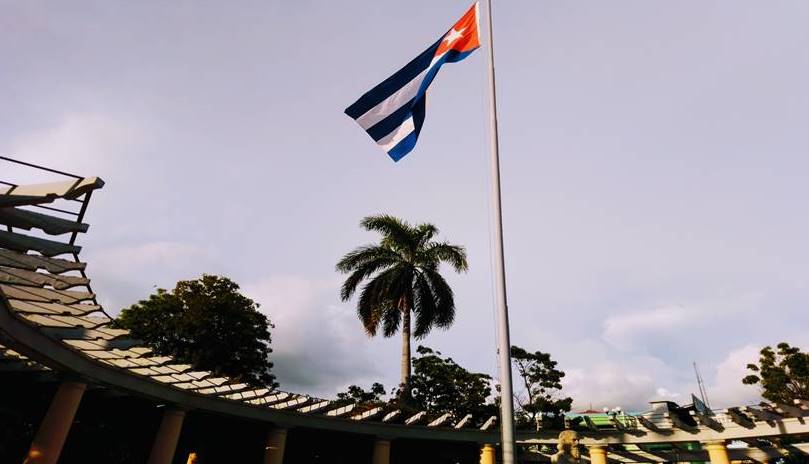
All the children of Santiago de Cuba have passed at least once through the Plaza de Marte. Hand in hand with their parents crossing the park, between laughter and games with friends in times of distraction or with their teachers during the frequent cultural events in that public scenario. For many infants of the city it has been the first approach to the national symbols: the flag of the lone star, the Bayamo Anthem and the coat of arms of the royal palm, as established in Article 2 of Law No.128/2019: Law of the National Symbols of the Republic of Cuba. The same was passed in the National Assembly of People’s Power, in the ordinary session of July 13, 2019. It was published in Official Gazette No.71, of September 19, 2019, and began to be in force as from 2020.
The legal norm in force repealed Law No.42 of the National Symbols, of December 27, 1983, as well as Decree No.143 Regulation of the Law of the National Symbols, of April 13, 1988, of the Council of Ministers, making way for the provision and putting into force of new regulations concerning the national symbols of the Republic of Cuba. The content of the Law is of interest to all Cubans, and especially to the residents of Santiago de Cuba, the only city of the Island mentioned in the content of the legal body, for its condition of Hero City that keeps, in addition, the remains of the National Hero Jose Marti, whose urn remains covered by the National Flag, in the mausoleum of the Santa Ifigenia cemetery.
Day of the Cuban Culture by Health Standards
